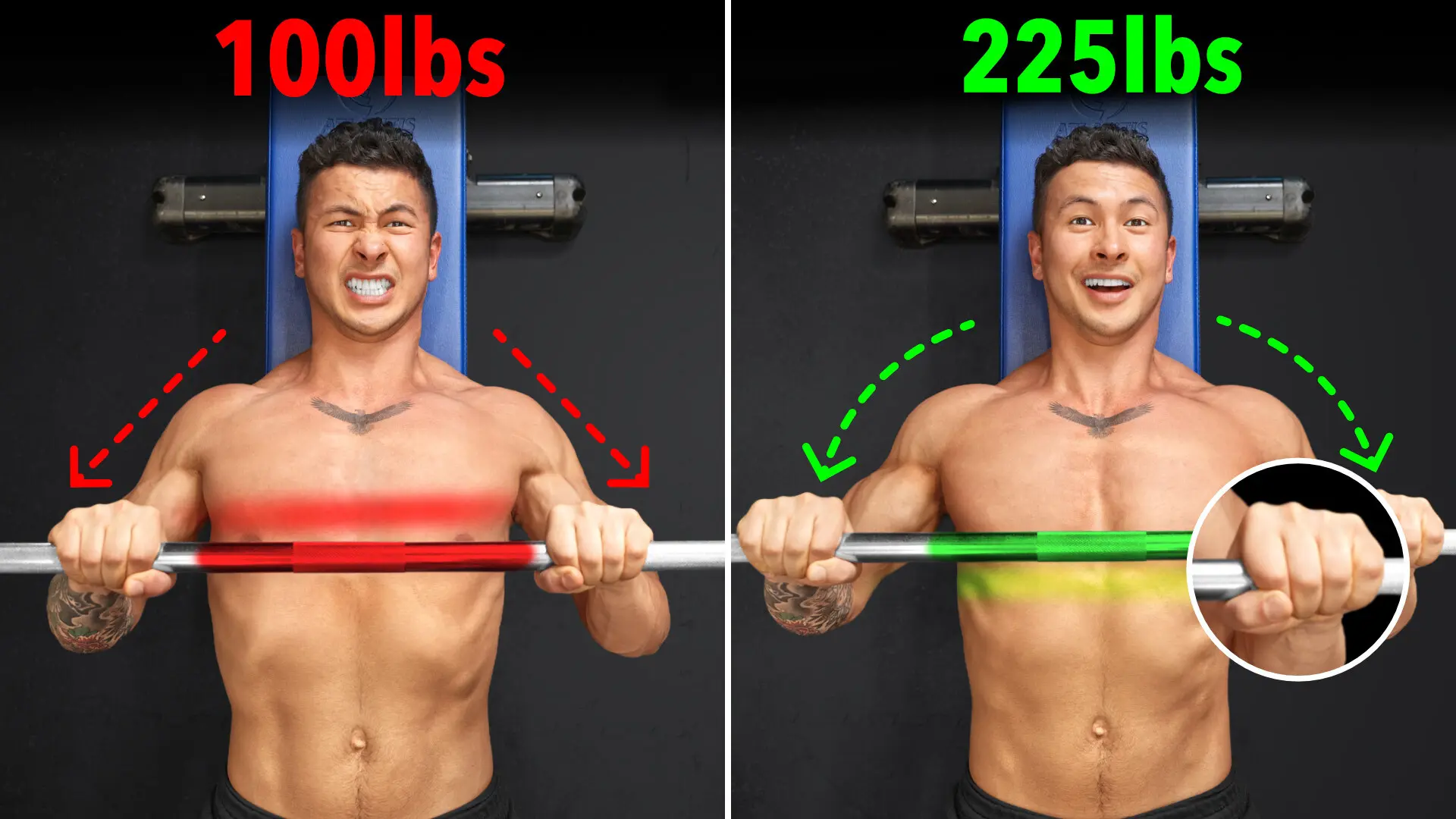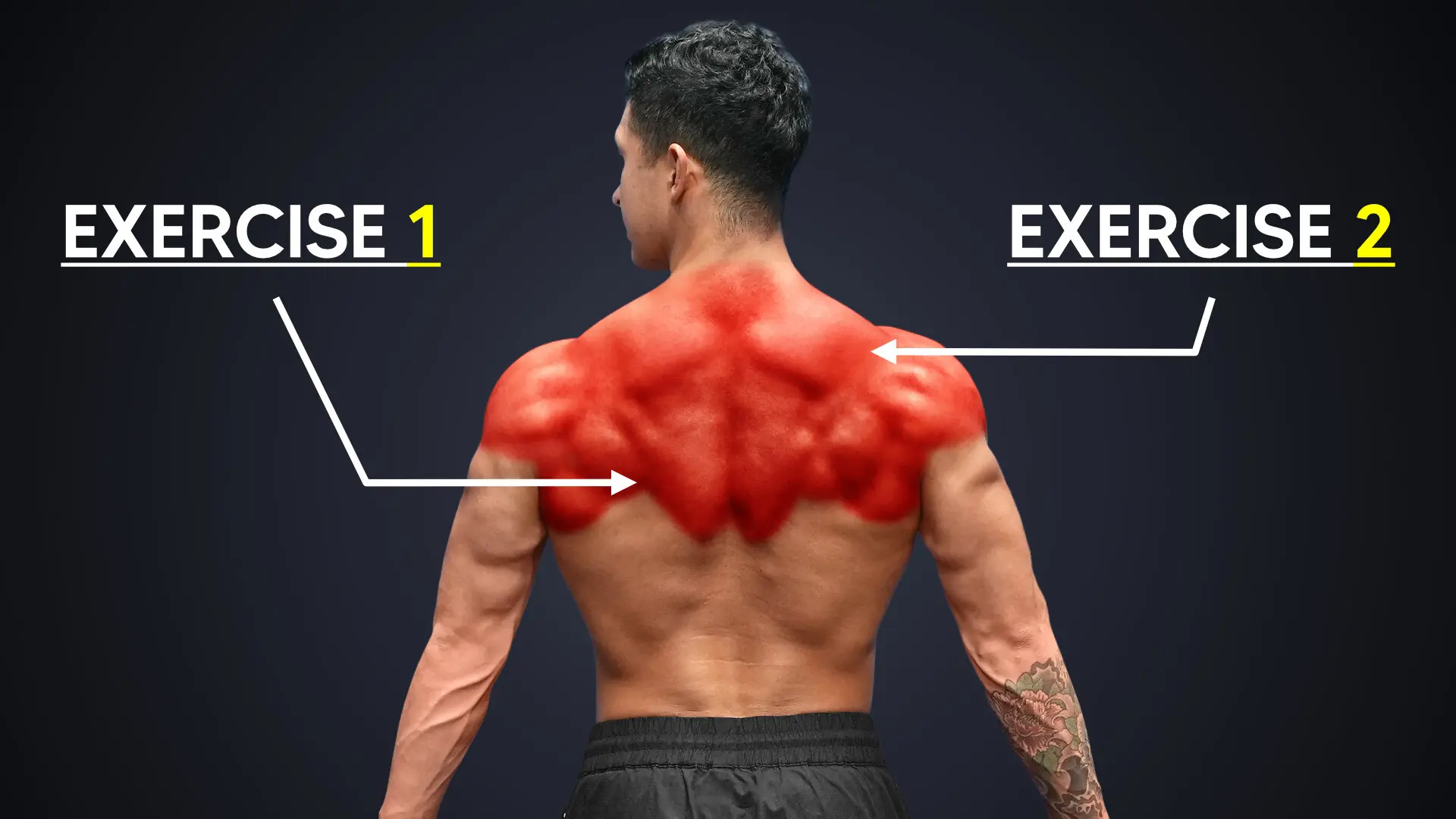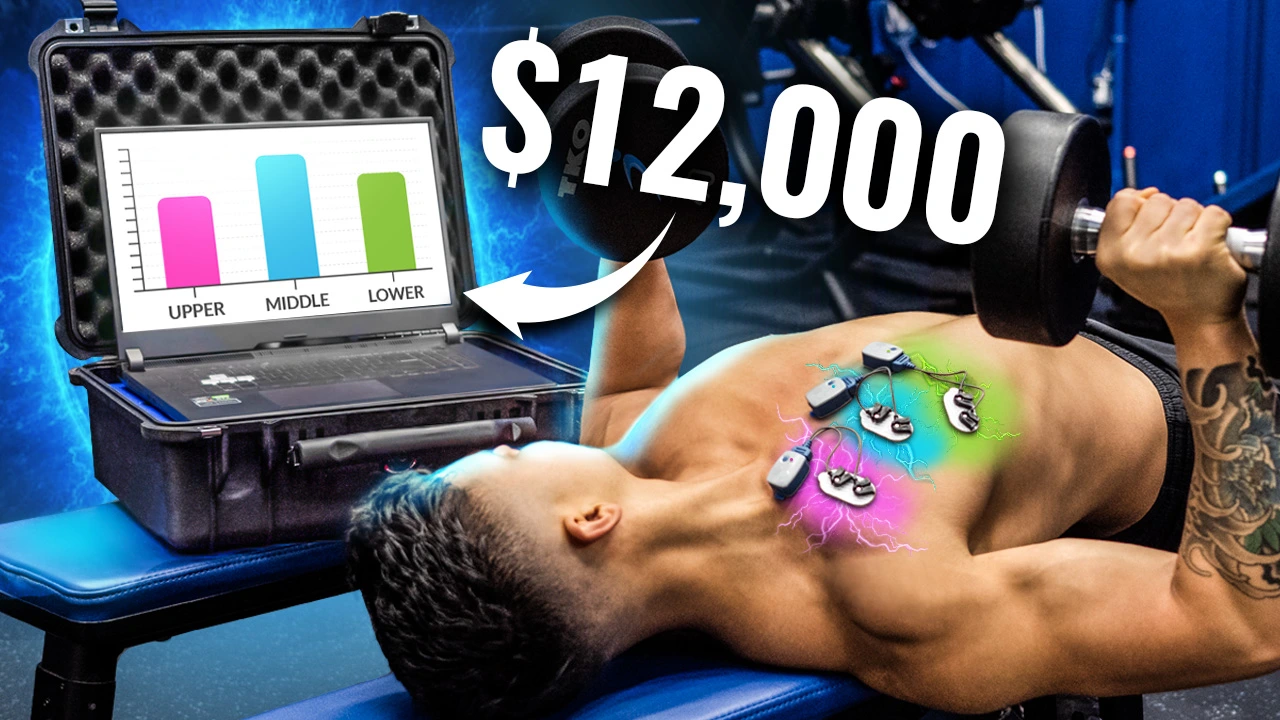
The Best Chest Exercises: A $12,000 Machine Reveals What They Are
I used a $12,000 EMG machine (named "Betty") to discover what the best chest exercises really are. Read this article to find out what I found out.
This is Betty: a $12,000 EMG machine that is going to help us determine what the best chest exercises ACTUALLY are.

How does this all work?
Why Did I Buy A $12,000 Piece Of Equipment To Test What The Best Chest Exercises Are?
Right. Before we dive into what the best chest exercises are (so you can add them to your workout routine for that covetable mass), let’s talk about why I bought a $12,000 piece of equipment in the first place.
I remember watching the movie “Crazy, Stupid, Love” and seeing Ryan Gosling’s ripped, muscular body on screen.

I imagined just how incredible and confident it would feel to look like that.
So at 15 years old, I joined a gym. But I quickly became confused and overwhelmed. Everyone I asked about how I should train or eat had a different opinion. For years, I tried all sorts of different things, but still, I just felt stuck.

Until one day during my studies at University, I accidentally came across a 2010 study titled “The Mechanisms of Muscle Hypertrophy and Their Application to Resistance Training”.
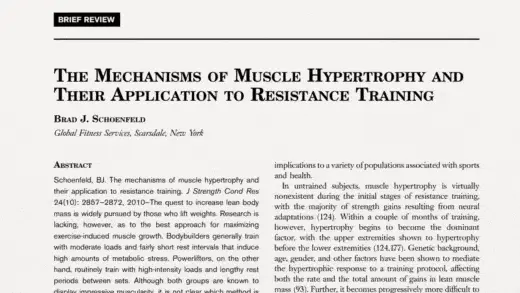
This paper dove into the science behind what made muscles grow and how to apply that science to your training.
I was fascinated. I felt like I stumbled upon a gold mine.
I started reading more studies and applying these methods to my own training, and my results skyrocketed. I taught these methods to my friends and family, and the same effect happened there.
Finally! A source of truth I could trust. Then it hit me … if I could blend my love of science with fitness, that would be my dream. And I knew I couldn’t be alone. I couldn’t be the only one who was frustrated with opinions and suggestions that just didn’t work.
That’s when I went all in to pursue a career in fitness. Learning from the experts and dissecting the research in a way that the average joe could understand and apply.
However … I wanted to go a step further … I want to not only communicate research and spread the truth to the world, but I want to be part of that research process.
Enter Betty (An EMG Machine—But Don't Call Her That)
This brings me back to Betty.
She’s what’s known as an EMG machine (just don’t tell her that, she likes to feel human). EMG stands for electromyography, and it’s a way of measuring the electrical activity produced by muscles when they contract.
Researchers use this to assess how well different exercises (e.g., pecs exercises) are at activating our muscles (e.g., pecs muscle).
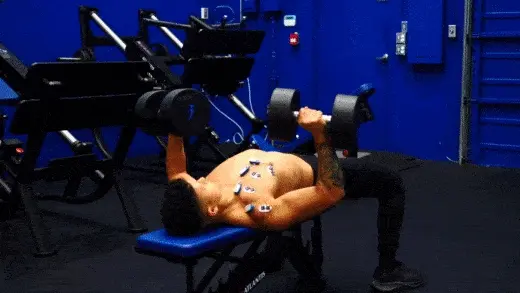
Although there are some limitations to this method which I’ll discuss later on, it’s a good way to test the potential effectiveness of different exercises.
But just when I was getting excited about using Betty to find out what the best chest exercises really are ... I ran into a problem.
I haven’t used this machine since back in University. And I want to make sure I run this experiment as best as possible so that we, and you, could actually trust the data on the best chest exercises.
So I called up a few colleagues, and they led me to John, a Master’s student specializing in EMG who taught me everything I needed to know before I actually ran an experiment to find out what the best chest exercises are.

How We Set Up The Experiment To Find Out What The Best Chest Exercises Are
Finally, Betty and I were ready for our first test run—one step closer to discovering what the best chest exercises really are!
Test Variables
After getting the hang of her, it was time to prep the experiment and think about all the variables we had to control.
- Subjects: Everyone's bodies are slightly different. So, in general, the more subjects involved in a study, the more reliable the data will be. So, although it would triple the work, I wanted at least 3 subjects in total. Luckily, we had Alex (one of our Built With Science Coaches) and Raza (our Operations Manager) eager to find out what the best chest exercises are. Raza is more of a beginner lifter, so I thought it'll be interesting to see how his results would compare to mine and Alex's.
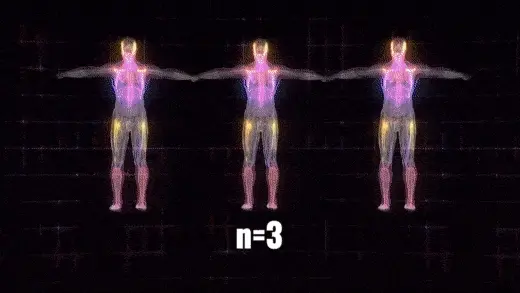
- Weight used on each chest exercise: Obviously, the weights Alex, Raza, and I can lift will be different. This is why we had to figure out how much weight we'd be using on each chest exercise to ensure they were equally challenging for us. So, a week before the test date to find out what the best chest exercises are, we all spent a whole day in our gym and figured out our estimated "1 rep max" for each exercise. This is the maximum amount of weight we could lift on each exercise. On test day, we'd use 70% of this weight for each of the exercises we were testing. That said, we couldn't really do this with push-ups since you're forced to use your own body weight. This led to some interesting results—and I'll share what they are later.
- Then, to make things really interesting, the wager: More on this below.
What Is This Supposed "Wager"?
So, as mentioned earlier, Betty is going to help us determine what the best chest exercises are for the:
- Upper chest
- Middle chest AND
- Lower chest
Before conducting the experiment, I had each of us (i.e., Raza, Alex, and I) write down on a piece of paper which exercises from the list we think will end up being the top 2 for each chest area (in other words: the best chest exercises in each category).
Once we get the results of the best chest exercises (as determined by Betty), we'll then compare them to each of our lists. The person who gets the fewest exercises correct will be forced to deal with the consequences.
And what "consequences" are we talking about, specifically? Answer: a full-body dunk into a human-body-sized Canadian Tundra Death Trap—guaranteed to shrink whatever manhood you have left.

What Did We Test To Determine The Best Chest Exercises?
Here’s a list of all the chest exercises we’ll be testing to determine the best chest exercises.
- Push-ups
- Banded push-ups
- Standing cable fly
- High to low cable fly
- Seated cable fly
- Chest dips
- Barbell bench press
- Incline barbell bench press
- Flat dumbbell press
- Incline machine press
- 15-degree incline dumbbell press
- 30-degree incline dumbbell press
- 45-degree incline dumbbell press
- Decline dumbbell press
- Pinch press
- Pec deck machine
A Few Final Touches On Test Day
But, before we tested (and found out, once and for all, the best chest exercises), there were just a few more final things we needed to get done on test day:
- A clean shave (to help the sensors stick): Thanks to my half-Filipino genes and Alex's Vietnamese background, we were ready to go. Raza, on the other hand, needed some work.
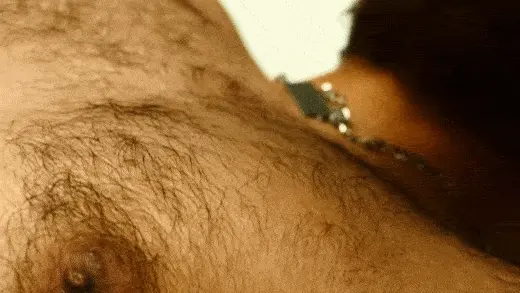
- Electrode placement: We put sensors on the upper, middle, and lower portions of the chest so we could rank each exercise based on how well they work for each of these areas. But we also put one on the front delt to see if any exercises caused the delts to take over rather than the chest. Obviously, the best chest exercises shouldn't involve too much delts activation.
- Maximum voluntary contraction (MVC) measurements: Before we could go into the first exercise, we had to take a crucial measurement to make sure we could standardize the data. It's the "maximum voluntary contraction" (i.e., MVC). This represents the maximum activation your muscle can reach. Note that this value will be slightly different for everyone. So, by gathering this value before we start testing the exercises, we're able to accurately compare the chest exercises we do against each of our maximum values. This gives us an accurate sense of how well a particular exercise works for our individual chest muscles. Getting this value wasn't easy. But we did it anyway, and we were ready to test.
What We Did During The Actual Test To Discover The Best Chest Exercises
Here's what you need to know about the actual test designed to discover the best chest exercises out there:
- Design: We did 1 set of 5 reps for each exercise, then took at least a 5-minute break in between before proceeding to the next. This is similar to what most EMG research papers out there do, too.
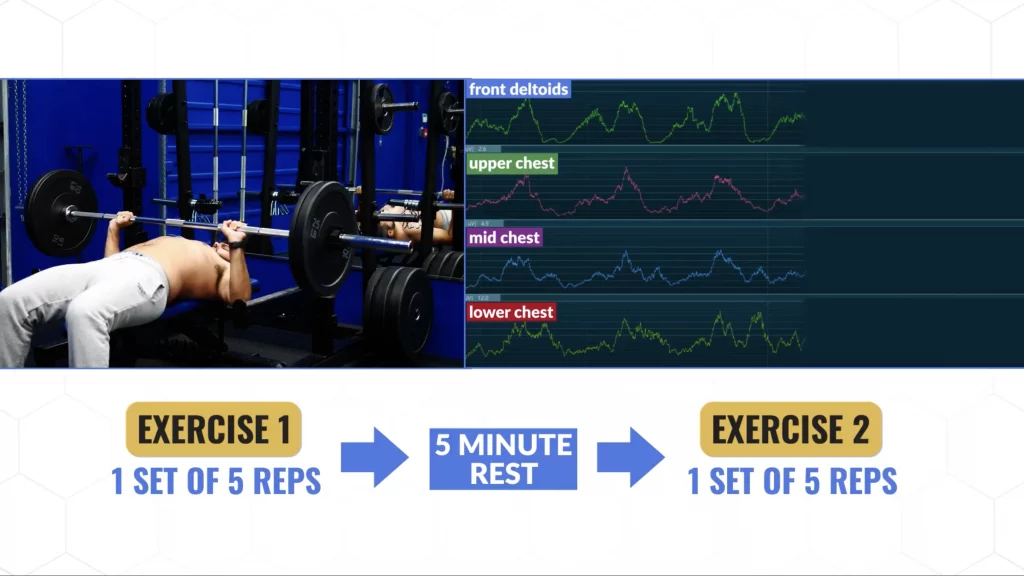
- We ensured proper form: As you probably already know, form is extremely important to activate the right muscles in the first place. So, I closely monitored and tweaked our form if needed during the study. In fact, you can see the importance of this from Raza. Take a look at his chest activation using his original form, then again when using our corrected, science-based push-up form. There was a whopping 150% boost in his chest activation! Honestly, it's the little details that make all the difference. And this is what we teach you how to do in our brand new 2.0 online fitness programs!
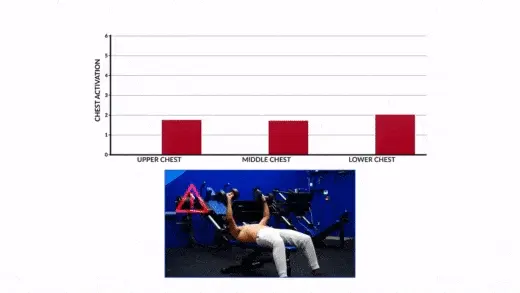
- An "oops" moment: Okay, so this isn't anything truly important—but I just thought it'd be fun to share. So, one of the most popular exercises on this list is the "pec deck machine". But because we conducted the experiment at our Built With Science gym, we actually didn't have access to this particular machine! Luckily, there was a public gym nearby, and we headed there to complete our study.

So What Are The Best Chest Exercises (According To Betty)?
Before we reveal the best chest exercises within each category, it's important to be mindful of the limitations of this little experiment. Namely, with several variables and just 3 subjects, it's hard to detect any statistical differences.
That said, I did average the data across us 3 (i.e., Raza, Alex, and I)—and found some really interesting findings that align with a lot of other research out there.
The Best Chest Exercises For The Upper Chest
Now, without further ado, let's start with the best chest exercises for the upper chest.

Generally, exercises done on an incline bench will better target the upper chest. So, it's no surprise that the top two exercises were both incline dumbbell presses—just at different bench angles.
We tested three angles:
- 15 degrees
- 30 degrees AND
- 45 degrees
But for all 3 of us, as soon as the bench incline reached 45 degrees, the upper chest activation began to decrease, and the shoulders started to take over.
This is something that I've seen in past EMG studies as well.
As a result, the lower inclines of 15 degrees and 30 degrees, which is usually just 1 to 2 notches up from the bottom position, came out on top. 15 degrees worked best for me, so I’ll be sticking with that, whereas 30 degrees worked best for Raza and Alex.
I’d suggest you try out both and see what feels best for you.
An Additional Exercise I'd Like To Mention: The Pinch Press
Now, there is, however, one more upper chest exercise I want to highlight. It's called the pinch press, a popular "Instagram influencer" exercise that I thought would be fun to throw in and test.
Guess what? This ended up being Raza's top upper chest exercise. It scored quite well overall for me as well.
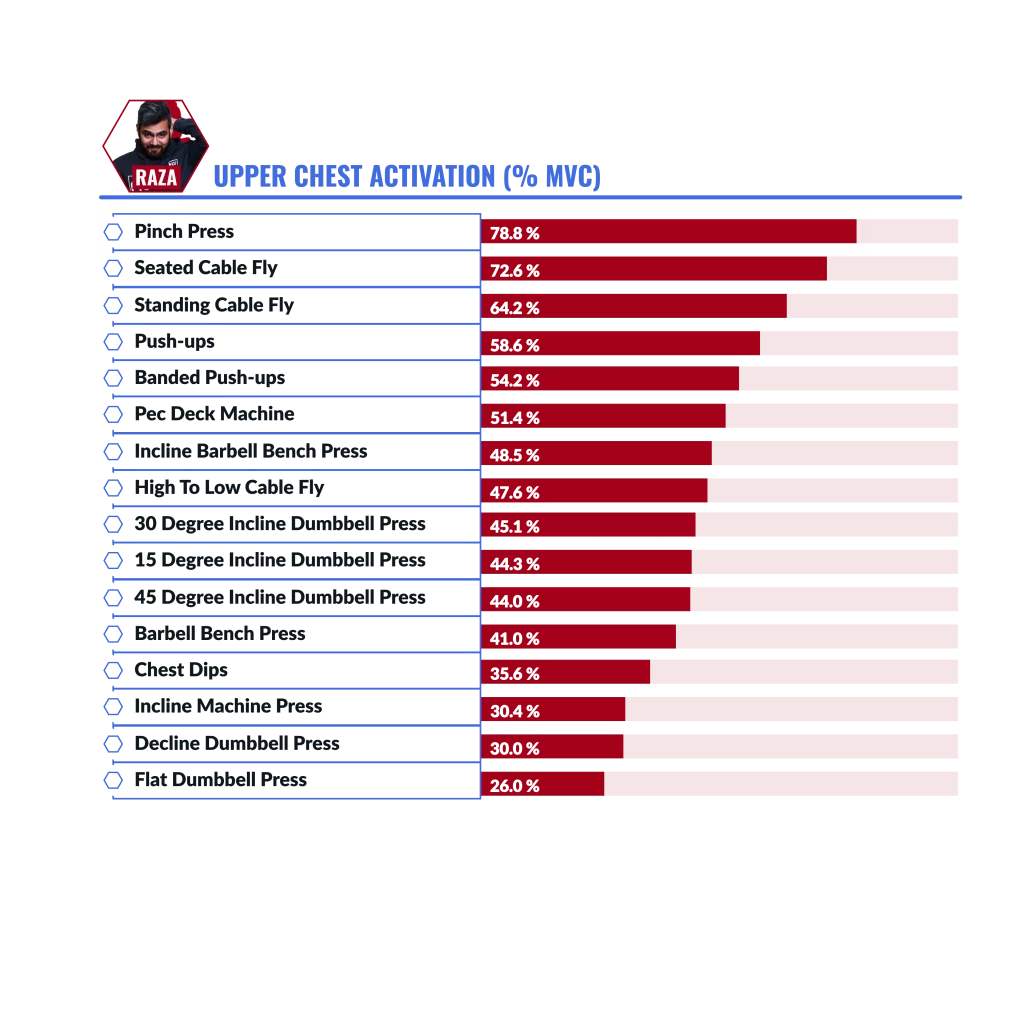
But I wouldn't recommend it. In fact, it's far from being one of the best chest exercises around.
Why? Well, this brings me to one of Betty's limitations (I'm sorry, baby, don't take it personally). Although an exercise may activate a muscle really well, it doesn't necessarily mean it's the best option to grow that muscle.
In the case of the pinch press, the chest is activating really hard to keep the weights squeezed together. This type of contraction on the chest is what's called an isometric contraction—which, unfortunately, just isn't very effective for building muscle. It's like trying to grow your legs with wall sits instead of squats.
Luckily, the pinch press ended up being the only "high activation but low muscle building potential" exercise in the list I tested.
The Best Chest Exercises For The Middle Chest
Now, the best chest exercises for the middle chest.

The first winner is actually not a very well-known exercise, but it's something we use in our Built With Science programs. And it's a favorite of a few popular bodybuilders, such as John Meadows (RIP).
Psst: we don't just include the best chest exercises in our Built With Science programs. You'll also find the best shoulders, back, hamstrings, quads ... you-name-it-we've-got-it exercises. Interested in "hacking" your way to your ideal physique? Then take the quick analysis quiz below to discover the best program for you and your body:
Click the button below to take my analysis quiz to discover the best program for you:
↓
It's none other than the decline dumbbell press. But it's not the typical version you see at the gym.
Here, we used just a very slight elevation by placing a weight plate underneath the front of the bench.
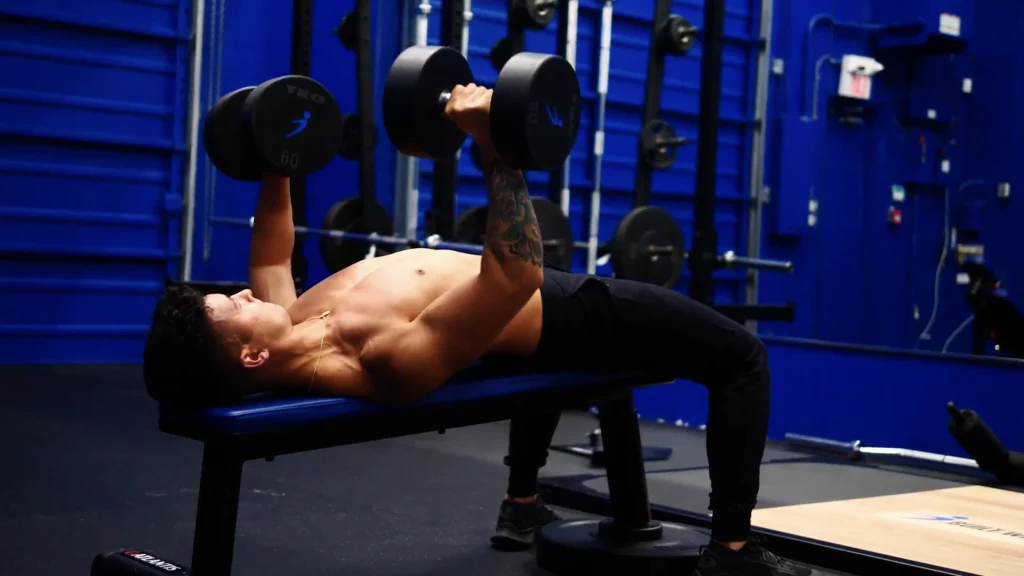
Usually, this helps emphasize the lower chest the most. But, to my surprise, it did an excellent job of activating the middle chest for all 4 of us.
The other winner was an exercise with a very stable setup—and one that provides constant tension to the chest throughout the whole range of motion. It's the seated cable fly.
In this case, we put the cable handles at chest height, which seemed to be the perfect setting for the middle chest, and, as you'll see, the lower chest as well.
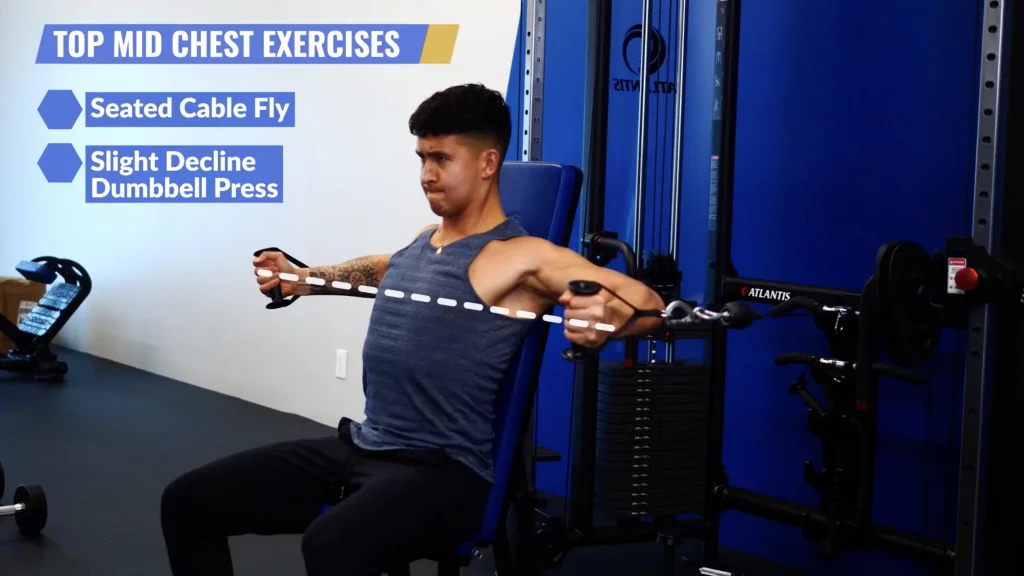
An Additional Exercise I'd Like To Mention: The Push-Ups
Before we move on to the best chest exercises for the lower chest, I want to highlight one more exercise. Push-ups.
Bodyweight push-ups scored extremely poorly for me.

And for Alex as well:
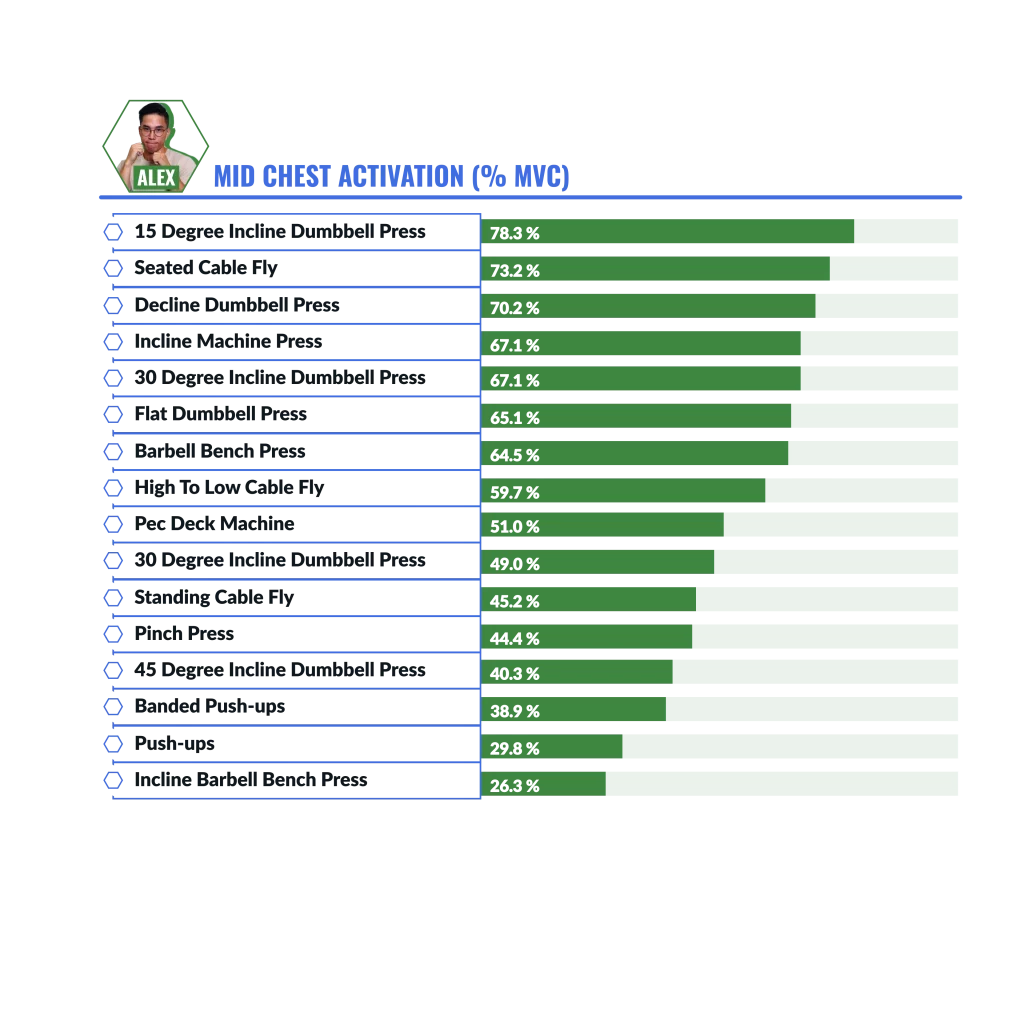
But, for Raza, because they were more challenging for him to do, it actually ranked the highest for his middle chest.
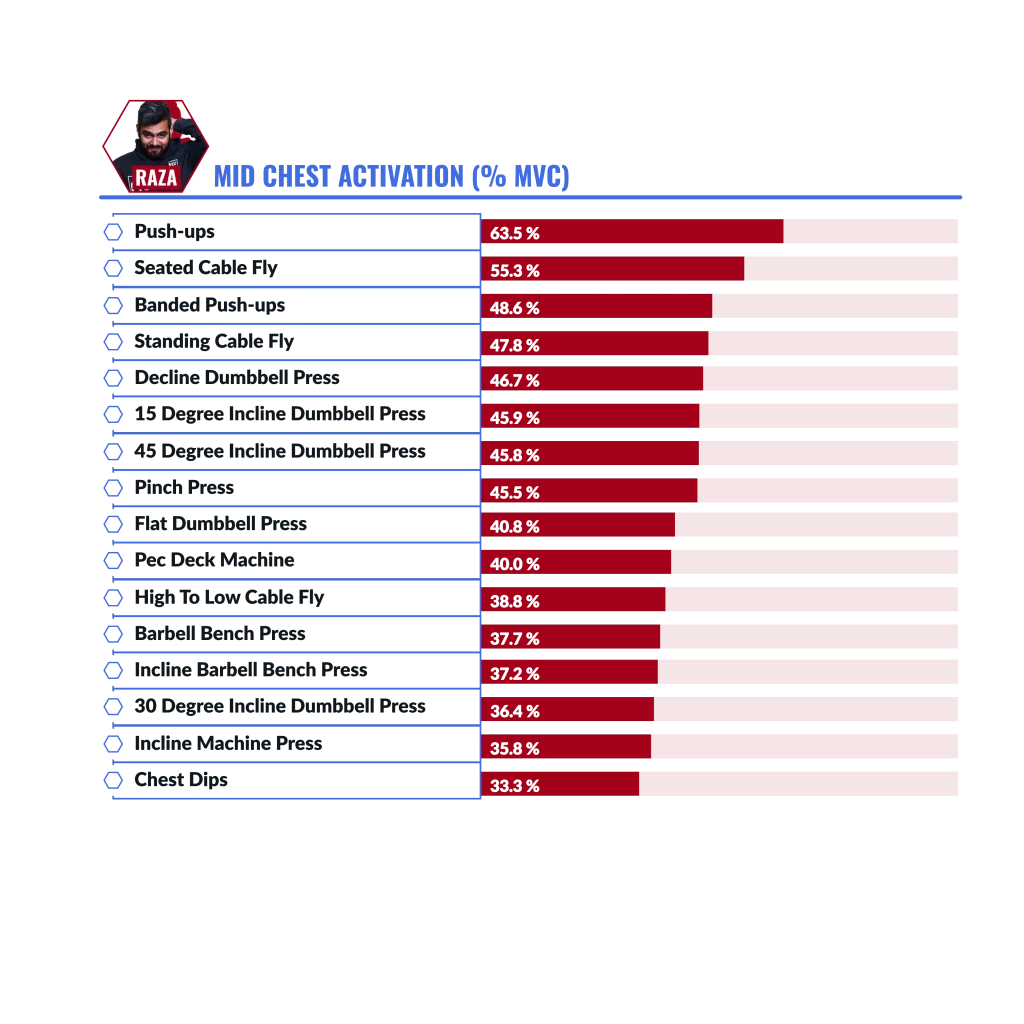
So, while it can be a great exercise and just as effective as something like the bench press for beginners, it will become less effective as you get stronger and need more of a challenge.
The Best Chest Exercises For The Lower Chest
Last but not least, the best chest exercises for the lower chest.
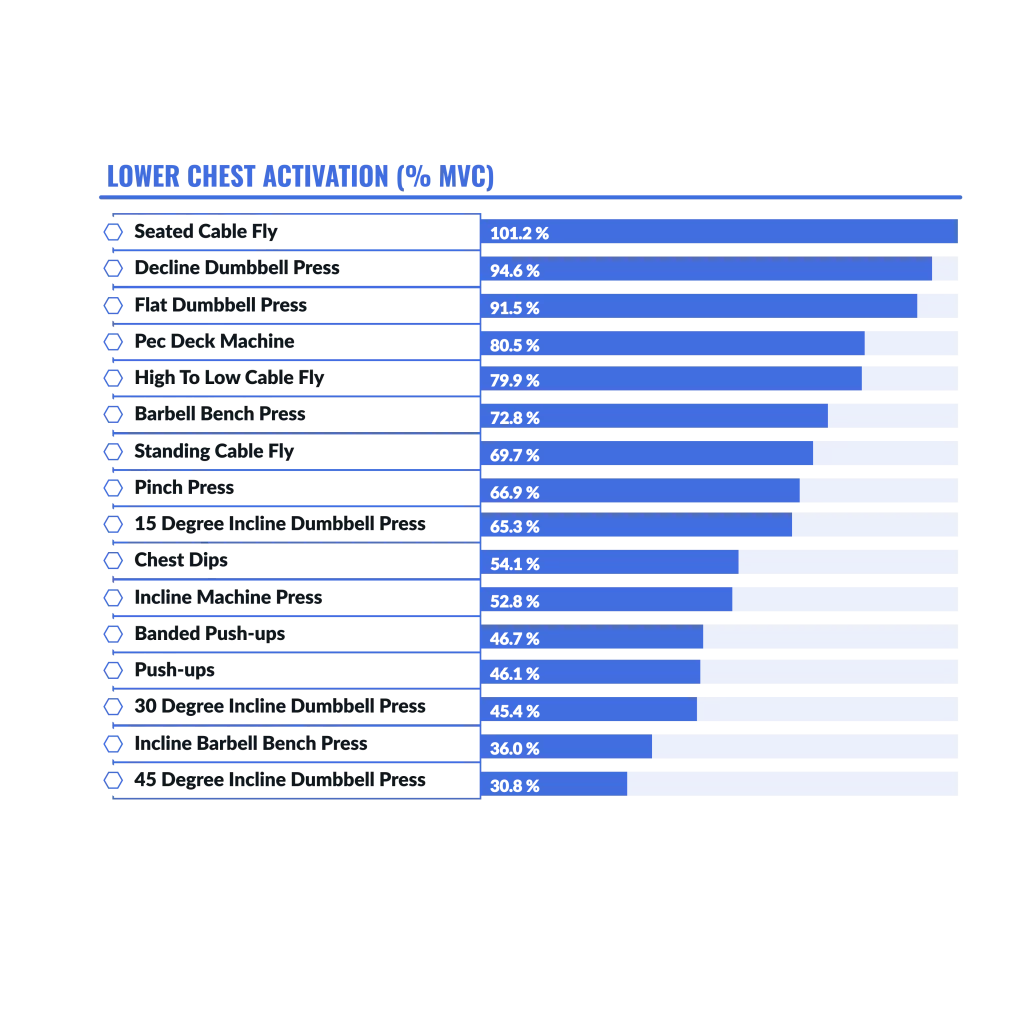
Here I expected high to low cable flyes to win, because tension from the cable aligns well with the lower chest fibers. While it did end up scoring well, seated cable flyes came out on top. This might be because it’s a more stable setup, with the tension from the cable still aligning quite well with the lower chest.
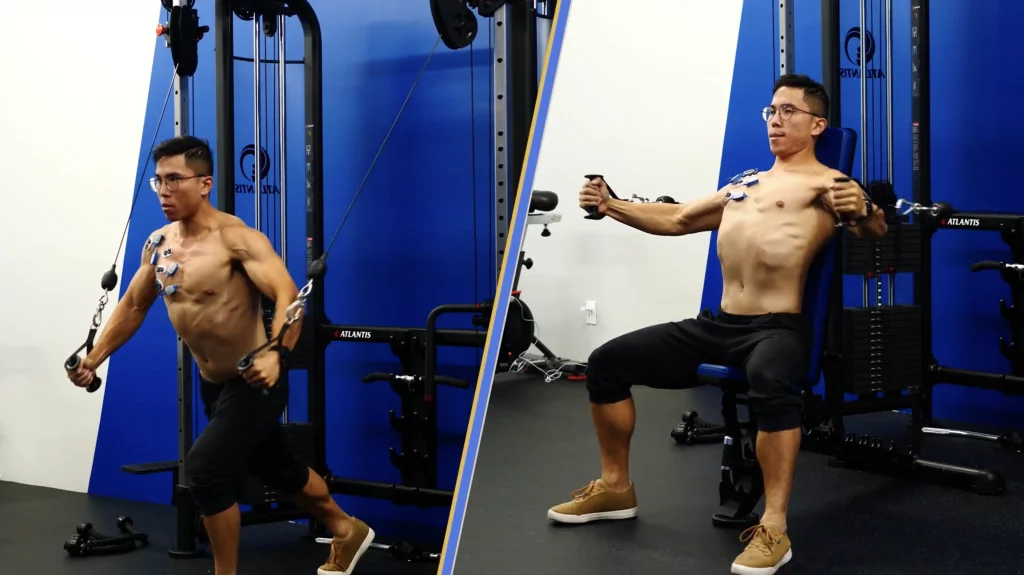
So both are great options, but I would be interested to see if activation would change at all if I placed the sensors a little more on the outer chest, which is where I personally feel high to low cable flyes the most.
The other winner joining the list of the best chest exercises was once again the decline dumbbell press, suggesting that the very slight decline aligns the press very well with both the middle and the lower fibers of the chest.
Psst: want to take a deeper look into the results? I've got you covered. Continue scrolling till the bonus "Nerd Talk" section to view all the data in detail, plus the list of all the winners (i.e., the best chest exercises for each area of the chest).
"The Best Chest Exercises" Wager: So Who Won? (And Who Got Dunked?)
So, at the end of the test, we all got changed and gathered around for the verdict. At that point, I still had no idea who was going in. Who got the most correct guesses for the best chest exercises?
- Will it be the beginner (i.e., Raza)?
- The master coach (i.e., Alex)?
- Or my worst fear ... me?
I got 4 correct.
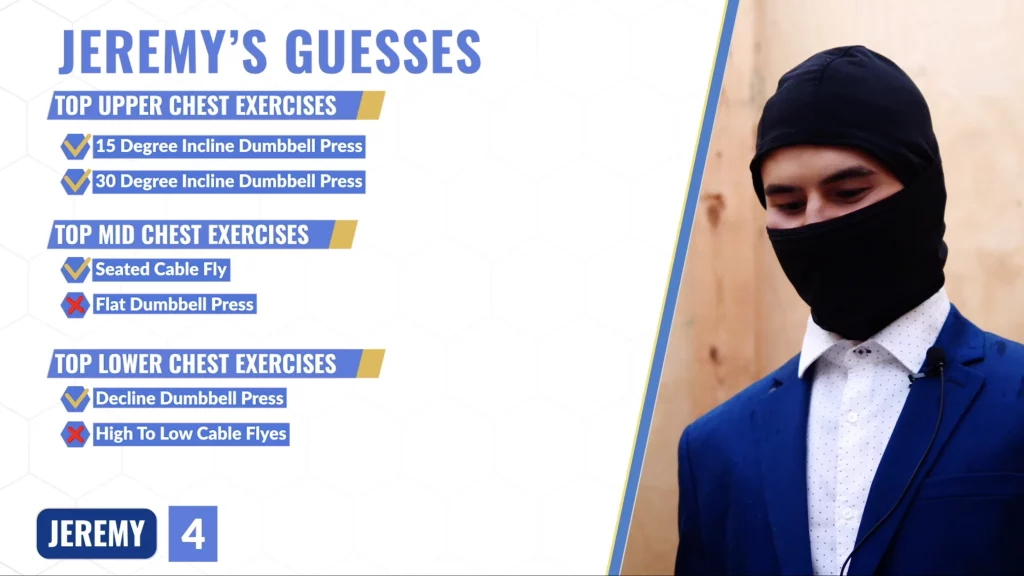
Alex got 4 correct.
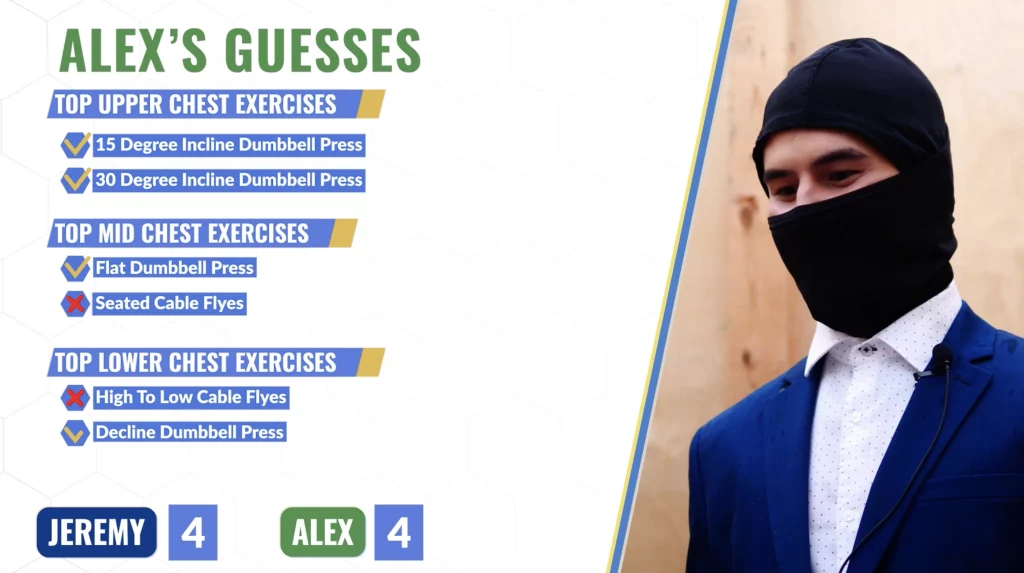
And Raza? He got 3 correct.
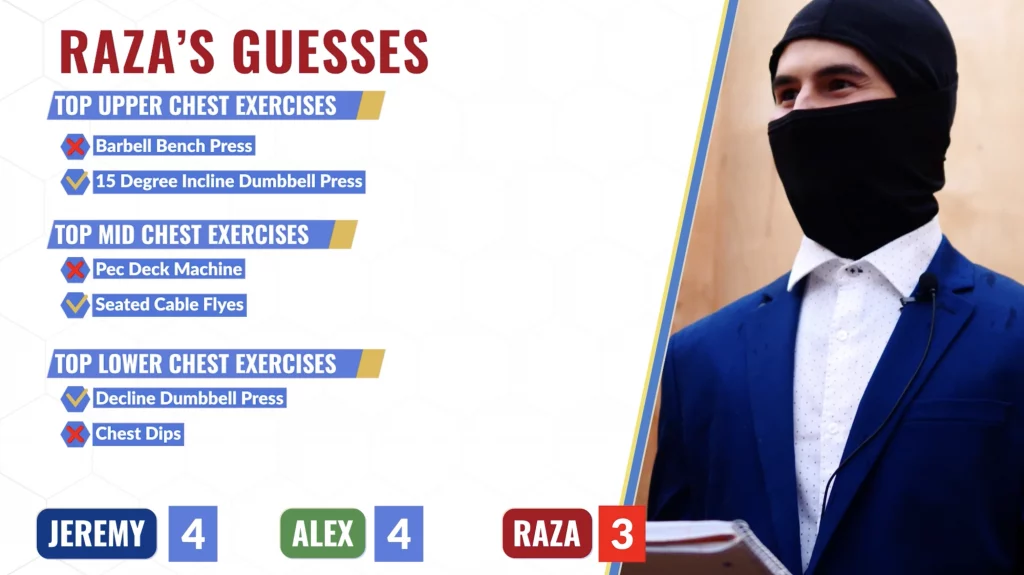
This meant Raza had to go in!

Seeing Raza take his ice plunge like an absolute champ inspired me to jump in. And as I sat there freezing in the rain, I started getting a little emotional.

After hitting 100,000 subscribers on YouTube, I founded Built With Science which stemmed from a bigger vision I always had in mind.
To build a legacy that would last long after I'm gone and be much greater and larger than myself.
A legacy that would bring a more scientific and research-backed approach to the fitness industry and weed out the BS and "bro-science" that plagues the industry.
This little science experiment on the best chest exercises was a big step towards realizing that. For the first time ever, rather than just observing the science, I’m, in a way, kind of actually doing the science. I’m excited about where this leads, and I appreciate you joining me on this journey.
One final thing: many of the best chest exercises you'll come across here are the EXACT ones I use in my Built With Science 2.0 (new and improved!) programs. So, if you want to fast-track your results and transformation, definitely take the quick analysis quiz below to discover the best program for you and your body:
Click the button below to take my analysis quiz to discover the best program for you:
↓
Alright, I'll see you next time. And if you're looking for more help with exercise selection, feel free to check out my past articles on some of the best exercises for bigger shoulders:
- 15 BEST Shoulder Exercises For Boulder Shoulders (And How To Use Them)
- Shoulder Workout for Mass and Symmetry (10 Studies)
- Why Your Delts Aren’t Growing (ONE FIX!)
By the way, here’s the article summed up into a YouTube video:
Bonus: "Nerd Talk"
Individual Differences: A Deeper Look Into The Data (And What It Means For The Best Chest Exercises)
The data on the best chest exercises out there I reported earlier was based on the averages of the 3 subjects involved in the study (i.e., Raza, Alex, and myself).
| INDIVIDUAL DATA: | ||||
| Jeremy exercise | Front delt | Upper chest | Middle chest | Lower chest |
| push-ups | 31.4 | 22.2 | 32.5 | 29.7 |
| banded push-ups | 41.1 | 37 | 41.1 | 34.8 |
| standing cable fly | 25.6 | 25.4 | 66.3 | 44.9 |
| high to low cable fly | 16.7 | 20.2 | 62.3 | 53.8 |
| seated cable fly | 35.6 | 30 | 79.2 | 57.2 |
| chest dips | 59.1 | 21.9 | 45.7 | 39.4 |
| barbell bench press | 44 | 48.3 | 50.3 | 53.5 |
| incline barbell bench press | 46.9 | 36.8 | 45.3 | 30.3 |
| flat dumbbell press | 46.5 | 54.3 | 59.6 | 63.6 |
| incline machine press | 54 | 57.5 | 53.7 | 56.4 |
| 15 degree incline dumbbell press | 37.6 | 64.9 | 52.2 | 55.5 |
| 30 degree incline dumbbell press | 42.5 | 49.5 | 46.6 | 39.4 |
| 45 degree incline dumbbell press | 43.8 | 30.7 | 43.9 | 22.8 |
| decline dumbbell press | 55.3 | 53 | 62.8 | 73.8 |
| pinch press | 31.1 | 27.6 | 70.6 | 51.7 |
| pec deck machine | 34 | 31.8 | 84.5 | 55 |
| Alex exercise | Front delt | Upper chest | Middle chest | Lower chest |
| push-ups | 37.2 | 37.3 | 29.8 | 49.5 |
| banded push-ups | 65.4 | 45.2 | 38.9 | 55.1 |
| standing cable flyes | 23 | 50.5 | 45.2 | 110 |
| high to low cable fly | 24.1 | 54.8 | 59.7 | 132 |
| seated cable fly | 35.3 | 65.5 | 73.2 | 173 |
| chest dips | 46 | 68.8 | 49 | 66.4 |
| barbell bench press | 73.6 | 81.6 | 64.5 | 109 |
| incline barbell bench press | 77.6 | 54.8 | 26.3 | 29.5 |
| flat dumbbell press | 54 | 67.3 | 65.1 | 135 |
| incline machine press | 56.7 | 65.6 | 67.1 | 72.2 |
| 15 degree incline dumbbell press | 58.7 | 73.7 | 78.3 | 107 |
| 30 degree incline dumbbell press | 77.3 | 82.2 | 67.1 | 68.2 |
| 45 degree incline dumbbell press | 78.2 | 68 | 40.3 | 41.2 |
| decline dumbbell press | 50.8 | 61 | 70.2 | 145 |
| pinch press | 33.3 | 38.7 | 44.4 | 104 |
| pec deck machine | 21.2 | 55.4 | 51 | 131 |
| Raza exercise | Front delt | Upper chest | Middle chest | Lower chest |
| push-ups | 43.7 | 58.6 | 63.5 | 59.1 |
| banded push-ups | 42.2 | 54.2 | 48.6 | 50.4 |
| standing cable fly | 35 | 64.2 | 47.8 | 54.4 |
| high to low cable fly | 14.4 | 47.6 | 38.8 | 54.1 |
| seated cable fly | 38.4 | 72.6 | 55.3 | 73.4 |
| chest dips | 41.5 | 35.6 | 33.3 | 56.5 |
| barbell bench press | 43 | 41 | 37.7 | 55.9 |
| incline barbell bench press | 44.5 | 48.5 | 37.2 | 48.2 |
| flat dumbbell press | 17.2 | 26 | 40.8 | 76 |
| incline machine press | 44 | 30.4 | 35.8 | 30 |
| 15 degree incline dumbbell press | 36.2 | 44.3 | 45.9 | 33.6 |
| 30 degree incline dumbbell press | 43.3 | 45.1 | 36.4 | 28.8 |
| 45 degree incline dumbbell press | 49 | 44 | 45.8 | 28.4 |
| decline dumbbell press | 33.3 | 30 | 46.7 | 65.1 |
| pinch press | 48.8 | 78.8 | 45.5 | 45.2 |
| pec deck machine | 19.2 | 51.4 | 40 | 55.6 |
However, when you take a look at the data at an individual level, some interesting things appear:
- The pec deck machine worked best at activating my middle chest—and by quite a bit! On the other hand, it didn't do nearly as well for Alex and Raza. Anecdotally, I did feel quite a strong chest contraction as I performed the pec deck machine. Then again, maybe it was just the lab coat ~vibes in the public gym.
- Different exercises worked "the best" for each of us. For example, the “flat dumbbell press” was best at activating the lower chest for Raza even though we determined the “seated cable fly” and “decline dumbbell press” were the best chest exercises for the lower chest when we averaged the data. However, if you look at Raza’s data more closely, the seated cable fly and the decline dumbbell press ranked very close behind his flat dumbbell press value. Those three exercises also all worked very well for myself and Alex. So although there were some individual differences, overall, the trends were very similar, which makes the “average winners” (i.e., all the best chest exercises) we reported earlier a helpful “go-to” list that will likely be good options for the vast majority of people.
- Alex's numbers are a lot higher (especially for the lower chest). In fact, many of his lower chest values exceed 100%. If you remember from earlier, 100% was the measured “maximum” contraction we established during our MVC protocol. So, if you manage to exceed 100% during an exercise (in Alex’s case, he got all the way up to 173% for his lower chest when doing seated cable flies), it means that you activated your chest even more than during the MVC protocol when you were supposed to be activating your chest as much as possible. This could mean that Alex just didn’t push hard enough and contract his chest as much as he could during his MVC protocol. Although, in this case, it doesn’t really affect the data negatively since we averaged everything out, it is something I’ll be mindful of going forward.
- Here's what I learned about front delts activation on the various tested chest exercises. For me, chest dips activated my front delts the most (no wonder I’ve always hated this exercise!). Surprisingly, chest dips worked fairly well for Alex and Raza and were nowhere near the top of their list for front delts. Instead, it was the 45-degree incline dumbbell press that showed the highest front delt activation for them (as we discussed earlier in this article). Are there any exercises where you really feel the front delts take over? Given that your form is correct, then you might want to reconsider them for another exercise where they don’t take over!
Should We Have Cared About Grip Width? What About Electrode Placement (Outer Vs Lower Chest)?
We tested several different exercises, but one thing we didn’t play around with when trying to determine the best chest exercises was grip width.
I’ve seen some EMG papers that found more upper chest activation when using a narrower grip during the bench press. I’d also be interested to see how the other regions of the chest are affected by a narrower vs wider grip.
Also, I placed the electrodes in the middle of the upper, middle, and lower portions of the chest.
But what if I placed them more on the “outer” chest or “inner” chest? Would the activation be different?
Lastly, I tested all exercises by using 5 reps at 70% 1RM (70% of the max weight you could lift for that exercise). But what if I went even heavier or pushed closer (or even all the way) to failure? I’d assume muscle activation would increase, but it would be interesting to try out.


